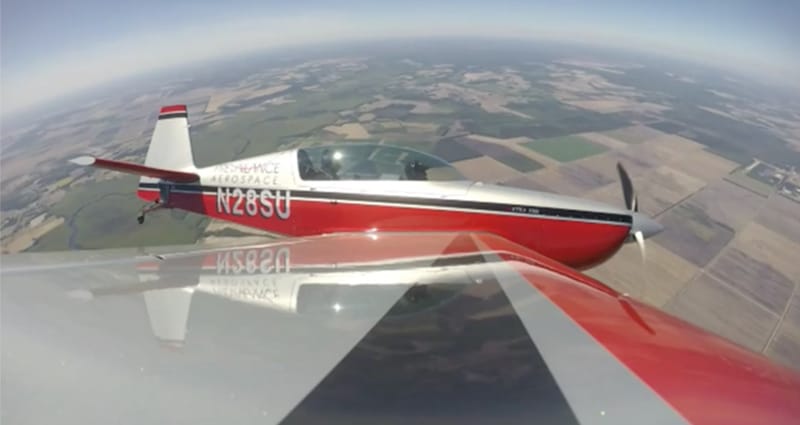Getting Back in the Flying Game!

We are living in unprecedented times. The COVID-19 crisis has essentially shut down many flight departments and training organizations around the globe. As the chief pilot of a safety academy, I too have been put to the test on how to get my instructors back up to speed after longer than normal times away from the cockpit.
Every flight department manages currency and standard operating procedures (SOPs) in a way that works best for the organization. As U.S. states begin to lift flight restrictions, I offer my own experience as I find the environment has forced me to truly assess what each pilot needs to regain and maintain individual proficiency.
A Safe Return to Flight
Our normal SOP for the Extra aircraft that we use for Upset Prevention & Recovery Training (UPRT) includes currency flights anytime an instructor has not flown in the last 14 days. From 15-30 days, each instructor conducts a currency flight that includes a minimum of three landings, one practice precautionary emergency landing and one high altitude power loss landing. From 31-45 days, each instructor conducts a warm-up flight with me or another current designated instructor.
Beyond 45 days, it is at my discretion as the Part 141/Part 61 chief instructor pilot and must include a minimum of two flights with one under observation. We have experienced very few periods of more than 45 days without a flight, but in the few instances where we have, I would personally fly with the instructor through the full gambit of our curriculum, observing instructional techniques, procedures and practice landings before sending them back out on their own.
My instructors also fly commercial, business, aerobatic and personal aircraft (some of which are tailwheel) on a regular basis. This is not the same type of flying as what we do in the Extra and why we institute maintaining proficiency and regular practice within our instructor cadre. I think the same is true of most flight departments. Even if your pilots are not flying the organization’s aircraft, they are likely still flying other aircraft. Is that experience enough to call them “current” or even more importantly “proficient”? Our philosophy is generally “no” due to the dynamic nature of the UPRT instruction that we provide. It begs the question: How can flight departments keep pilots current and proficient in their aircraft during prolonged periods of non-flying?
Using Downtime Wisely
Our team has adopted a “use this time wisely” philosophy, which has allowed me to further standardize our instructor cadre. I am flying with our instructors on a bi-weekly basis to confirm each instructor’s training methodology and alignment with company procedures, and to refine the good work that each is already doing for our clients. We are reviewing the Pilot Operating Handbook (POH) together, conducting teleconferences on systems and overhauling our briefs with new content and videos.
This is time we have never had available previously to make ourselves even better than we were before. Minor refinements sound a bit like the below video which does not include harsh criticism, but instead focus on enhancement of the quality services that we provide.
I challenge each pilot to do the same. Corporate, commercial and general aviation pilots have faced some of the longest times away from the cockpit in their personal and professional careers. Take this time to review your POH, related FAA and NTSB references and the latest accident reports. Use the simulator (if you don’t have the option of flying in your aircraft) to not only maintain currency, but to fly with each other and offer areas to improve upon.
Coming Back Better Than Ever
It is in these times that each pilot also realizes how critical it is to keep stick-and-rudder skills up to par. If we do not, the magnitude of startle1 during an upset or loss of control will be even greater than it would have been when a surprise takes a proficient pilot off their game. Don’t let complacency become part of your program. Instead, look at the varying ways you can improve your skills in this period of unprecedented non-flying.
As flight restrictions slowly lift and aviation authorities around the globe provide guidance2 on the best ways to manage COVID-19, get back in the books, make time for the simulator and challenge yourself to work with your peers, chiefs and directors to refine how you operate. As pilots, we consistently strive to be better, smarter, more effective and the best at what we do. Continue that mantra. It is important for you, your families, your colleagues, your organizations and aviation safety. Now get back out there and fly!
References
1 Startle Response, FAA Safety Team, Retrieved on 4/29/20 from: https://www.faa.gov/news/safety_briefing/2017/media/SE_Topic_17_06.pdf
2 Aviation and COVID-19, ICAO Security and Facilitation. Retrieved on 4/29/20 from: https://www.icao.int/Security/COVID-19/Pages/default.aspx

Prevailance Aerospace is a UPRT provider that has been working with corporate, government, and general aviation pilots to improve safety in the aviation industry. Prevailance Aerospace uses Extra 300 Series Aircraft for training and our pilots are experienced aviation professionals from various military and general aviation backgrounds. We know that successful aviation endeavors are accomplished through an uncompromising commitment to safety, impeccable professionalism, tremendous attention to detail, and constant improvement.
http://prevailanceaerospace.com
© 2025 Prevailance Aerospace. All Rights Reserved.
Next ArticleRelated Posts

Emerging Security Threats in Business Aviation: Activism and Down-Route Risks
Security incidents affecting business aviation do not need to involve violence to have an operational impact. A protest delaying crew movements, blocking access to a hangar or resulting in an unauthorized photograph of a sensitive client can all trigger reputational, financial or compliance concerns for operators.

Navigating Geopolitical Uncertainty Using Business Aviation
Bigger business jets mean bigger fuel tanks, longer trips, more border crossings, and bigger wallets! With an equipment upgrade also comes the requirement for a knowledge upgrade.

